Explore Nakhon Nayok - Thailand Travel, Asia
Nestled in central Thailand, Nakhon Nayok offers a captivating blend of natural beauty, rich history, and vibrant culture. Often overshadowed by more prominent tourist destinations, this hidden gem of Thailand provides a refreshing escape with its serene landscapes and authentic Thai experiences. Known for its lush national parks, cascading waterfalls, and historical landmarks, Nakhon Nayok is an ideal spot for travelers seeking both adventure and relaxation.
Population: Approximately 260,000 in 2018.
Economy: Nakhon Nayok's economy thrives on agriculture, particularly rice and fruit farming, alongside growing tourism. Local crafts and small businesses also contribute, supporting a balanced and sustainable local economy.
Landmarks: Famous for the Khao Yai National Park, Sarika Waterfall, and Wat Phra Phutthabat Noi.
Thailand
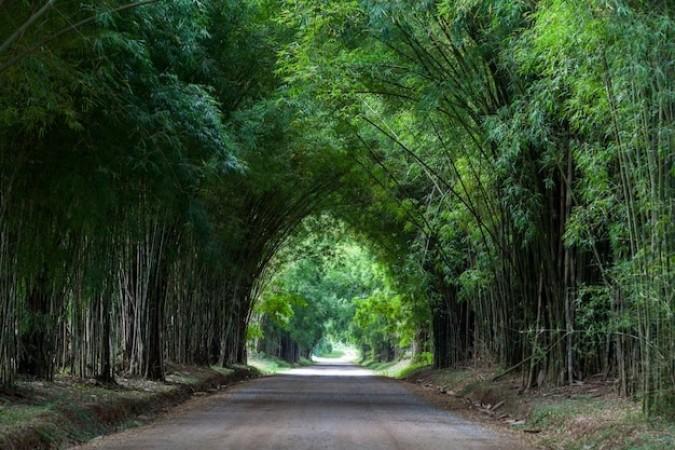
Overview of Nakhon Nayok
History & Cultural Influence
Nakhon Nayok boasts a rich tapestry of history that dates back centuries. Its strategic location along ancient trade routes made it a crucial area for commerce and cultural exchange. Today, remnants of its storied past can still be seen in the region’s ancient temples and historical sites, offering a glimpse into its storied heritage. The cultural influence in Nakhon Nayok is deeply rooted in traditional Thai customs and practices. The region is well-known for its traditional festivals, which celebrate the colorful local culture and religious activities. Influences from the nearby regions and historical interactions with various cultures have shaped Nakhon Nayok's unique cultural landscape.
Interaction with The Locals
Nakhon Nayok, a province in central Thailand, has a population of approximately 260,000 residents. The locals are renowned for being kind and inviting. The majority of the population is Thai, with a strong presence of traditional Thai culture and customs. The people of Nakhon Nayok are engaged in agriculture, local crafts, and tourism, reflecting the province’s blend of rural charm and cultural heritage.
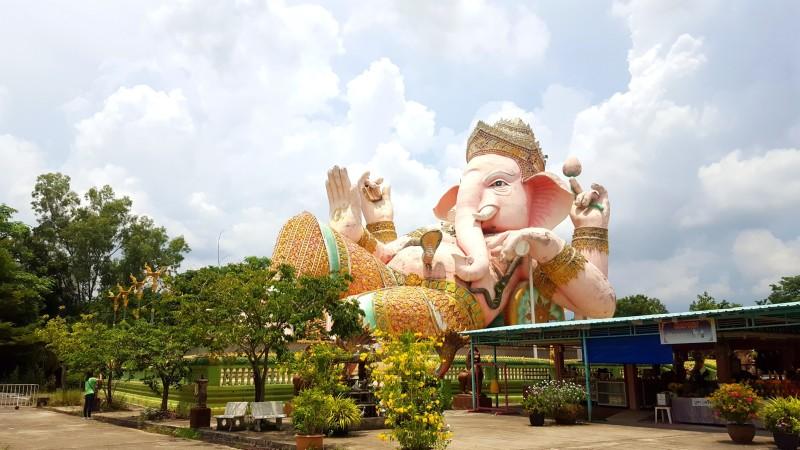
Ganesha Park - © Thailand Tourism
Top Attractions in Nakhon Nayok
Khao Yai National Park
Khao Yai National Park, a UNESCO World Heritage Site, is one of Nakhon Nayok’s crown jewels. This expansive park is renowned for its diverse ecosystems, including dense rainforests, grasslands, and stunning waterfalls. Visitors can embark on various hiking trails, go wildlife spotting, and experience the beauty of nature in its most pristine form. The park's rich biodiversity and scenic landscapes make it a must-visit for nature lovers and adventure enthusiasts alike.
Sarika Waterfall
The Sarika Waterfall is a breathtaking natural wonder located in the heart of Nakhon Nayok. This cascading waterfall plunges into a clear pool below, creating a serene and picturesque setting. It’s an ideal spot for relaxing, picnicking, or simply taking in the natural beauty. The surrounding area offers easy hiking trails and opportunities for photography, making it a popular destination for visitors looking to enjoy the outdoors.
Wat Phra Phutthabat Noi
Wat Phra Phutthabat Noi is a historical and spiritual landmark that showcases traditional Thai architecture and religious artistry. This ancient temple is revered for its serene atmosphere and historical significance. Visitors can explore its intricate carvings, beautiful Buddha statues, and learn about the temple’s spiritual heritage. It offers an insightful look at the region's cultural and religious customs.
Wat Tham Sarika
Wat Tham Sarika is another important temple in Nakhon Nayok, known for its cave setting and spiritual ambiance. The temple features impressive Buddha statues and is situated within a cave complex that adds to its mystical charm. It’s a serene location for reflection and offers visitors an opportunity to experience the spiritual side of Thai culture.
Phuttha Utthayan Makha Bucha
Phuttha Utthayan Makha Bucha is notable for its grand Buddha statue and peaceful surroundings. This landmark is a popular site for both worship and contemplation. The striking statue, set against a backdrop of lush greenery, provides a tranquil setting for visitors to enjoy the beauty of the area and engage in spiritual reflection.
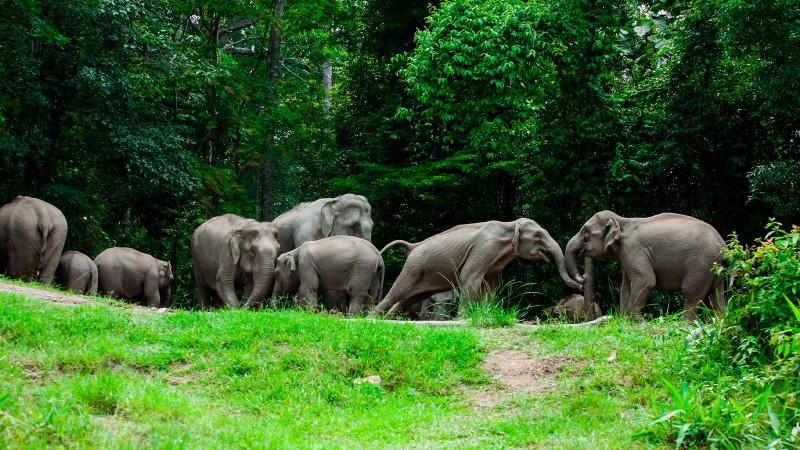
Elephants in Khao Yai National Park - © Thai National Park
Must-Try Dishes in Nakhon Nayok
- Pad Thai: A classic Thai dish featuring stir-fried rice noodles with shrimp, tofu, eggs, bean sprouts, and crushed peanuts, all tossed in a tangy tamarind sauce. It’s a flavorful and satisfying meal that captures the essence of Thai street food.
- Som Tam (Green Papaya Salad): This refreshing salad combines shredded green papaya with tomatoes, chilies, lime, fish sauce, and peanuts. It’s a perfect balance of spicy, sour, and sweet flavors, providing a taste of authentic Thai cuisine.
- Gaeng Keow Wan (Green Curry): A creamy and aromatic curry made with green curry paste, coconut milk, and a variety of vegetables and meats such as chicken or beef. It’s known for its rich, spicy flavor and is commonly served with steamed rice.
- Khao Soi (Northern Thai Curry Noodles): A rich and creamy curry noodle soup, typically made with chicken or beef, and topped with crispy fried noodles. It’s a delightful blend of spicy and sweet flavors, offering a unique taste of Northern Thai cuisine.
- Nam Tok Moo (Pork Waterfall Salad): This flavorful salad features grilled pork mixed with lime juice, fish sauce, mint, and roasted rice powder. It’s a spicy and tangy dish that’s perfect for those who enjoy bold flavors.
- Khao Niew Mamuang (Mango Sticky Rice): A beloved Thai dessert made with sweet sticky rice, fresh mango slices, and a drizzle of coconut milk. It’s a delightful combination of textures and flavors that’s both refreshing and satisfying.
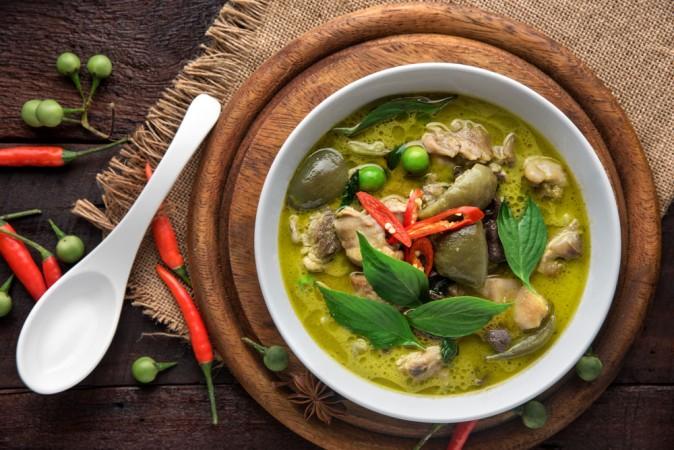
Gaeng Keow Wan (Green Curry) - © Asian Inspirations
Festivals & Local Celebrations
Nakhon Nayok Elephant Festival
Nakhon Nayok Elephant Festival is an annual event that celebrates the province's historical connection with elephants. Held in January, this festival features elephant parades, traditional Thai performances, and various activities centered around these majestic animals. It’s a vibrant event that honors the role elephants have played in Thai culture and history.
Songkran Festival (Thai New Year)
Songkran, the Thai New Year festival, takes place in April and is renowned for its lively water fights. This event marks the start of the Thai New Year, which is a period of cleansing and regeneration. Streets come alive with people spraying water, marching in parades, and performing traditional festivities. Songkran is a joyful and interactive festival that allows visitors to immerse themselves in Thai culture and experience its spirited traditions.
Khao Phansa Festival
Khao Phansa, also known as the Buddhist Lent, is celebrated with various traditional events in Nakhon Nayok. This festival marks the beginning of the rainy season when monks traditionally retreat to their monasteries for meditation. The festival includes ceremonies such as offering food and candles to monks, and local communities participate in merit-making activities and religious observances.
Loy Krathong
Loy Krathong is one of Nakhon Nayok’s most enchanting festivals, celebrated annually in November. During this event, locals and visitors create and float beautifully decorated krathongs (rafts) on rivers and ponds. The event is a symbolic expression of letting go of old grudges and expressing wishes for the future. The atmosphere is magical, with lanterns lighting up the night sky and traditional music and dance performances adding to the festivities.
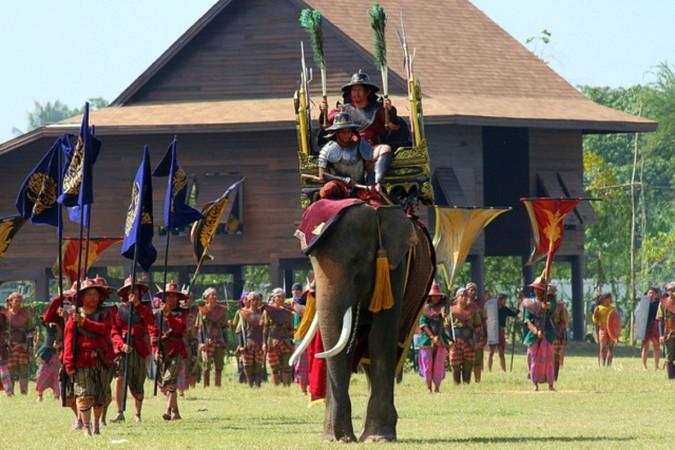
Nakhon Nayok Elephant Festival - © Thailand Tourism
What to Do in Nakhon Nayok
- Hike in Khao Yai National Park: Explore the extensive trails of Khao Yai National Park. Enjoy hiking through diverse landscapes, from dense forests to scenic viewpoints, and spot wildlife such as elephants and gibbons.
- Visit Sarika Waterfall: Relax and take in the natural beauty at Sarika Waterfall. The picturesque waterfall and its serene pool are perfect for a leisurely stroll, picnic, or a refreshing dip.
- Discover Heo Suwat Waterfall: Experience the breathtaking vistas and serene environment of Heo Suwat Waterfall. This stunning waterfall is perfect for nature enthusiasts and makes a lovely backdrop for outdoor activities.
- Explore Wat Phra Phutthabat Noi: Immerse yourself in the spiritual and historical legacy of Wat Phra Phutthabat Noi to admire its traditional Thai architecture, intricate carvings, and serene environment.
- Wander Through Wat Tham Sarika: Visit Wat Tham Sarika, a temple set within a cave complex and discover its impressive Buddha statues and enjoy the peaceful ambiance of this unique spiritual site.
- Enjoy Traditional Thai Massage: Indulge in a relaxing Thai massage at one of the local spas. Experience traditional techniques that promote relaxation and rejuvenation.
Shopping in Nakhon Nayok
- Nakhon Nayok Walking Street Market: Discover a vibrant array of goods at Nakhon Nayok Walking Street Market. This bustling market features fresh produce, street food, handmade crafts, and unique souvenirs. It’s the perfect spot to experience local life and pick up memorable keepsakes.
- Central Plaza Nakhon Nayok: Enjoy a modern shopping experience at Central Plaza Nakhon Nayok. This shopping center offers a range of retail options, including boutiques, electronics stores, and dining establishments. It’s a great place for both shopping and relaxation.
- Nakhon Nayok Night Market: Visit the Nakhon Nayok Night Market for an evening of shopping and dining. This market features a variety of local food stalls, clothing, accessories, and souvenirs, providing a lively and immersive shopping experience.
- Community Flea Markets: Check out community flea markets held throughout the year. These markets have a combination of antiques, second-hand things, and local products, making them a treasure trove for unusual finds and deals.
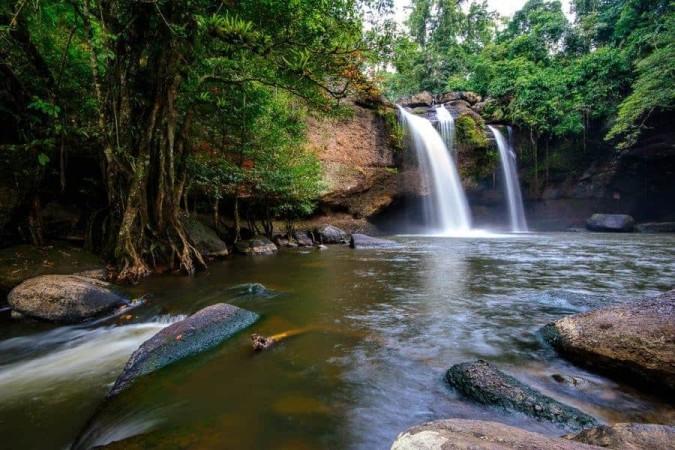
Visit Sarika Waterfall - © Thailand Tourism
Weather in Nakhon Nayok: Best Time to Visit
Dry Season in Nakhon Nayok
- Weather: The dry season in Nakhon Nayok features pleasant weather with lower humidity and temperatures ranging from 25°C to 35°C (77°F to 95°F). This season is defined by sunny sky and little rain, making it ideal for outdoor activities and exploration.
- Tourism Trend: This is the peak tourist season, attracting visitors eager to enjoy the province's natural beauty and cultural attractions. Activities such as hiking in Khao Yai National Park, visiting waterfalls, and participating in local festivals like Loy Krathong are highly popular. The comfortable weather also makes it a great time for exploring markets and enjoying outdoor dining.
Monsoon Season in Nakhon Nayok
- Weather: The rainy season brings frequent showers and higher humidity, with temperatures typically ranging from 24°C to 33°C (75°F to 91°F). While rain can be heavy at times, it usually occurs in short bursts, leaving plenty of time for other activities.
- Tourism Trend: This off-peak season offers a quieter, more tranquil experience for those who don’t mind the occasional rain. The lush landscapes are at their most vibrant, and waterfalls like Heo Suwat and Sarika are particularly spectacular. Visitors can enjoy fewer crowds at cultural sites and markets. The rainy season is also a great time for those interested in experiencing local life and participating in religious festivals like Khao Phansa.
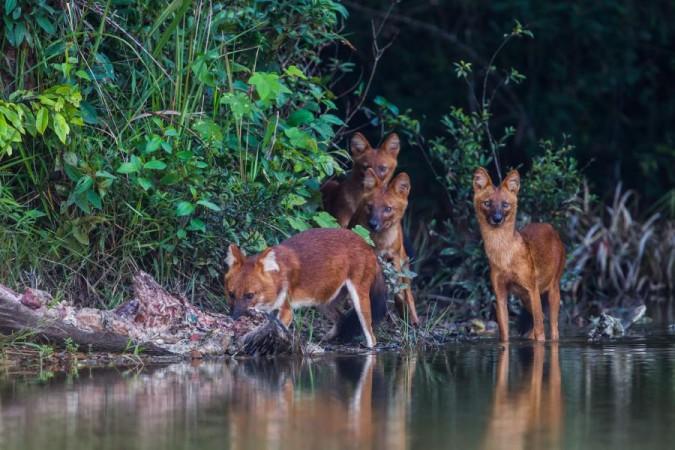
Capture the image of wild dog pack in Khao Yai National Park - © Thai National Park
Essential Travel Information
Getting Around Nakhon Nayok
- Songthaews: These shared pickup trucks are a popular and affordable way to travel short distances within Nakhon Nayok. They follow set routes and are convenient for local commuting.
- Tuk-Tuks: Tuk-tuks are a convenient and quintessentially Thai mode of transport for short trips around town. They offer a unique and lively way to experience local streets.
- Motorbikes: For more flexibility, consider renting a motorbike. This option allows you to explore at your own pace and reach more remote areas of the province.
- Taxis and Ride-Hailing Services: Taxis are available, but ride-hailing apps like Grab offer a more modern and convenient way to get around, providing fixed fares and reliable service.
ATM & Banking Services
In Nakhon Nayok, ATMs are conveniently located throughout town, allowing easy access to cash with international cards, though it's wise to be aware of potential foreign transaction fees. For broader banking needs, several local banks provide a range of services, including currency exchange and account management. Currency exchange services are also available at various locations, including banks and some hotels, but for the best rates, it’s generally preferable to use bank branches or authorized exchange counters rather than airports or hotel facilities.
Where to Stay in Nakhon Nayok
- Luxury Hotels: For a high-end experience, luxury hotels offer spacious rooms, upscale amenities, and exceptional service. These accommodations typically feature on-site dining options, swimming pools, and various premium facilities, ensuring a comfortable and sophisticated stay.
- Mid-Range Hotels: Mid-range hotels strike a compromise between comfort and price. They offer well-appointed rooms, essential amenities, and often include additional services such as on-site restaurants or fitness centers, catering to both leisure and business travelers.
- Guesthouses: Guesthouses offer a cozy and intimate atmosphere, providing a more personal and home-like stay. They are often run by local families, allowing guests to experience a more authentic and local perspective of the area.
- Homestays: Homestays offer an immersive cultural experience by allowing guests to stay with local families. This option provides a unique opportunity to engage with local traditions and daily life in a more personal setting.
- Resorts: Resorts combine comfort with access to nature, often located near scenic areas or attractions. They offer a range of amenities, including comfortable lodging, recreational facilities, and easy access to outdoor activities, making them ideal for a relaxing getaway.
Des articles pour vous

Voyage à Kampong Cham - Cambodge, Asie
Kampong Cham est une charmante ville riveraine située le long du fleuve Mékong. Connue pour son importance historique et ses attractions culturelles, Kampong Cham offre un mélange d'architecture coloniale, de temples anciens et de paysages pittoresques. Kampong Cham est reliée au district voisin de Tbong Khmum par le pont Kizuna, le premier pont au Cambodge à traverser le fleuve Mékong, en faisant un carrefour de transport crucial pour la région.
Population : Estimation de 80 000 habitants (en 2024)
Économie : Bien que n'étant pas encore une destination touristique majeure, Kampong Cham propose des sites culturels et historiques, tels que le temple Wat Nokor et le pont en bambou de Koh Pen, ainsi que des attractions naturelles comme des forêts et des chutes d'eau. Le gouvernement se concentre sur le développement du tourisme pour améliorer l'économie locale.
Points d'intérêt : Wat Nokor Bachey, Phnom Han Chey, Phnom Pros et Phnom Srey, pont en bambou de Koh Pen, Wat Joy T'maw, Preah Theat Teuk Chha, piste d'atterrissage abandonnée de l'US.

Explorez Nha Trang - Voyage au centre du Vietnam, Asie
Nichée le long de la magnifique côte du Vietnam, Nha Trang se distingue comme une destination de premier choix pour les voyageurs. Cette ville côtière, réputée pour ses superbes plages et sa vie marine foisonnante, s'adresse à tous. Nha Trang vous accueille à bras ouverts, que vous recherchiez des aventures, de la culture ou de la détente au bord de la mer. Ce guide vous fera découvrir les points forts de cet endroit magnifique, facilitant ainsi la planification de votre voyage de manière fluide et excitante.
Population : Environ 423 000 habitants en 2019.
Économie : L'un des principaux centres touristiques du Vietnam et la plus grande économie de la province de Khanh Hoa.
Sites emblématiques : Célèbre pour les tours Cham de Po Nagar, la cathédrale de Nha Trang et l'île Hon Mun.

Voyage à Sihanoukville - Cambodge, Asie
Sihanoukville, une ville côtière du sud-ouest du Cambodge, est la capitale de la province de Preah Sihanouk. Située sur une péninsule le long du golfe de Thaïlande, la ville est bien reliée à Phnom Penh par des autoroutes principales et dispose d'un aéroport international.
La ville abrite le seul port en eau profonde du Cambodge, jouant un rôle crucial dans la logistique et le commerce du pays. Les plages magnifiques de Sihanoukville, telles qu'Ochheuteal et Serendipity, attirent aussi bien les touristes nationaux qu'internationaux. Le développement économique a prospéré ces dernières années, en particulier grâce à la création de la Zone économique spéciale de Sihanoukville (SSEZ) et aux investissements chinois dans les casinos, l'immobilier et les stations balnéaires. La ville offre également des attractions naturelles telles que le parc national de Ream et plusieurs îles voisines, en faisant une destination variée pour les voyageurs d'affaires et de loisirs.
Population : La population de Sihanoukville était d'environ 160 000 habitants en 2024.
Économie : Sihanoukville, une ville côtière en pleine croissance au Cambodge, se distingue par son mélange dynamique de développement économique et de tourisme. La Zone économique spéciale de Sihanoukville (SSEZ) est devenue un pôle industriel majeur, abritant plus de 180 entreprises et créant des milliers d'emplois. Avec le seul port en eau profonde du Cambodge, la ville joue un rôle clé dans le commerce et la logistique du pays. Bien qu'elle se soit transformée d'une petite ville balnéaire tranquille en un centre urbain animé, Sihanoukville reste célèbre pour ses plages immaculées, attirant des touristes tout au long de l'année. Les investissements chinois importants ont alimenté la croissance des hôtels, des casinos et de l'immobilier, faisant de la ville un centre d'opportunités économiques et d'hospitalité.
Monuments : Plage d'Otres, Plage d'Ochheuteal, Plage de l'Indépendance, Parc national de Ream, Chute d'eau de Kbal Chhay, Monument des Lions d'Or, Wat Leu.

Explorez Kharkhorin - Voyage en Mongolie, Asie
Bienvenue à Kharkhorin, un trésor historique niché au cœur de la Mongolie. Ancienne capitale vibrante de l'Empire Mongol sous le légendaire Gengis Khan, Kharkhorin se dresse comme un témoignage de la riche culture et de l'histoire de la Mongolie. Cette ville antique possède une combinaison unique d'importance historique et de paysages époustouflants, en faisant une destination incontournable pour un voyage de rêve en Mongolie. En mettant le pied à Kharkhorin, vous ferez un saut dans le temps, à une époque de grands palais, de routes commerciales prospères et d'échanges culturels sans pareils. Que vous soyez intrigué par les ruines anciennes, désireux d'explorer les traditions locales ou simplement en quête d'une immersion dans la beauté naturelle de la Mongolie, Kharkhorin a quelque chose à offrir à chacun.
Population : Environ 1 000 habitants en 2020.
Économie : L'une des attractions touristiques les plus importantes de la Mongolie et l'ancienne capitale de l'Empire Mongol.
Monuments : Célèbre pour les Ruines de Kharkhorin, le Monastère d'Erdene Zuu, et la Vallée d'Orkhon, un site du patrimoine mondial de l'UNESCO.

Explore Luang Prabang - Laos Travel, Asia
Luang Prabang, nestled in northern Laos at the meeting point of the Mekong river and Nam Khan river, is a city celebrated for its rich cultural heritage and stunning natural beauty. Recognized as a UNESCO World Heritage Site in 1995, it boasts a unique blend of traditional Lao and French architecture that has been carefully preserved. Whether you're wandering through its ancient temples, admiring the local architecture, or soaking in the natural beauty of waterfalls and rivers, Luang Prabang offers something for everyone.
Population: Approximately 470,000 in 2020.
Economy: Luang Prabang's economy thrives on tourism, with its UNESCO status drawing visitors to its temples, natural wonders, and cultural experiences. Local crafts, hospitality, and small businesses also play vital roles, supporting the town's sustainable growth. Local crafts, hospitality, and small businesses also play vital roles, supporting the town's sustainable growth.
Landmarks: Famous for the Wat Xieng Thong, Royal Palace Museum (also known as Haw Kham), and Mount Phousi (Phou Si Hill).Luang Prabang, nestled in northern Laos at the meeting point of the Mekong river and Nam Khan river, is a city celebrated for its rich cultural heritage and stunning natural beauty. Recognized as a UNESCO World Heritage Site in 1995, it boasts a unique blend of traditional Lao and French architecture that has been carefully preserved. Whether you're wandering through its ancient temples, admiring the local architecture, or soaking in the natural beauty of waterfalls and rivers, Luang Prabang offers something for everyone.
Population: Approximately 470,000 in 2020.
Economy: Luang Prabang's economy thrives on tourism, with its UNESCO status drawing visitors to its temples, natural wonders, and cultural experiences. Local crafts, hospitality, and small businesses also play vital roles, supporting the town's sustainable growth. Local crafts, hospitality, and small businesses also play vital roles, supporting the town's sustainable growth.
Landmarks: Famous for the Wat Xieng Thong, Royal Palace Museum (also known as Haw Kham), and Mount Phousi (Phou Si Hill).

Explore Vientiane - Laos Travel, Asia
Vientiane, the capital of Laos, offers a unique travel experience for those looking to explore a peaceful Southeast Asian city with a deep connection to its cultural roots. Unlike other bustling capitals, Vientiane boasts a serene and laid-back atmosphere, making it a perfect destination for travelers wanting to escape the chaos of more crowded cities. This charming city sits along the Mekong River, offering scenic views, rich history, and a vibrant yet tranquil way of life. As a gateway to exploring Laos, this capital invites you to slow down, immerse in its heritage, and enjoy the local flavors.
Population: Approximately 840,000 in 2023.
Economy: Vientiane's economy is growing steadily, driven by government services, trade, and tourism. Key sectors include agriculture, manufacturing, and construction. The city's strategic location along the Mekong River supports trade with neighboring Thailand and Vietnam.
Landmarks: Famous for the Pha That Luang, Patuxai, and the Buddha Park (or Wat Xieng Khuan).
